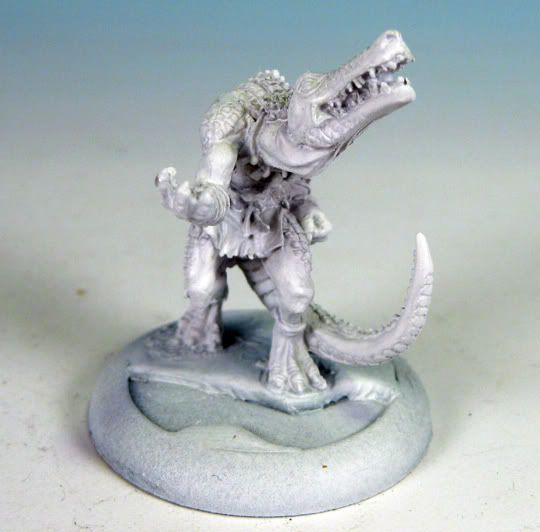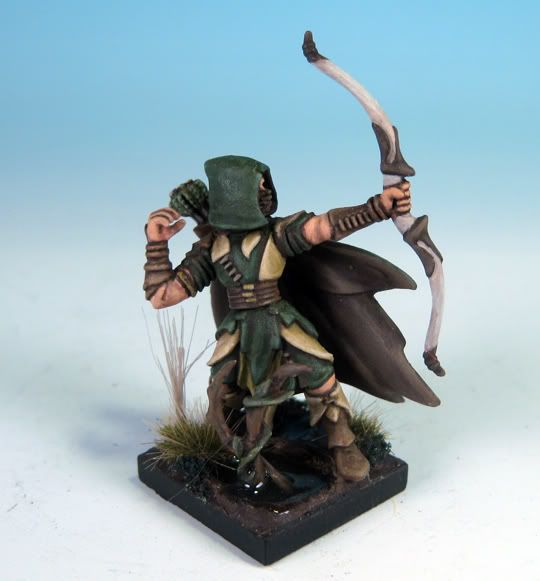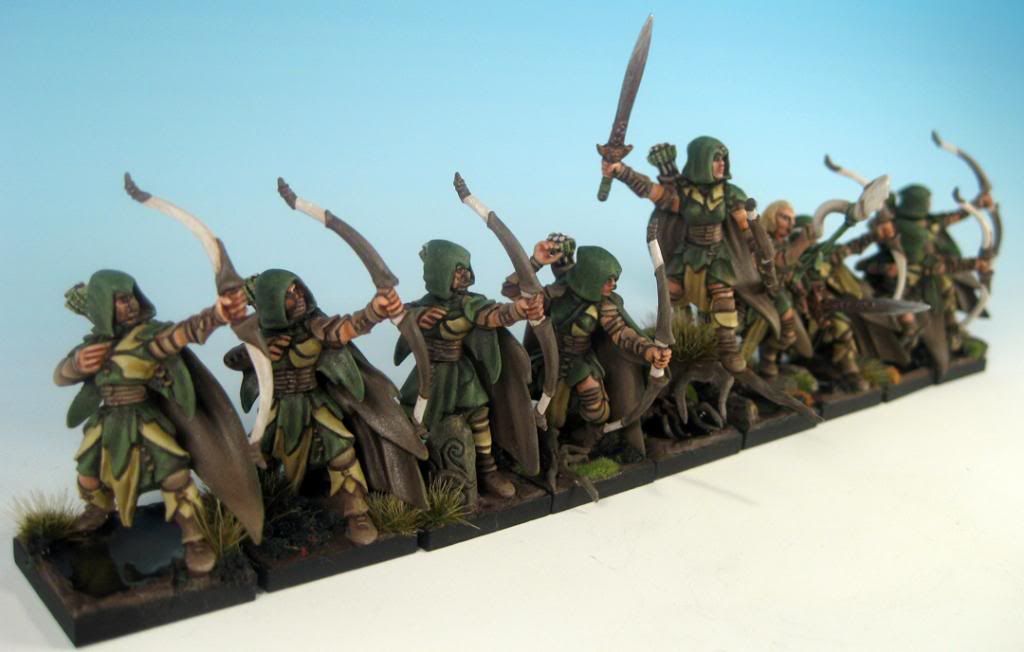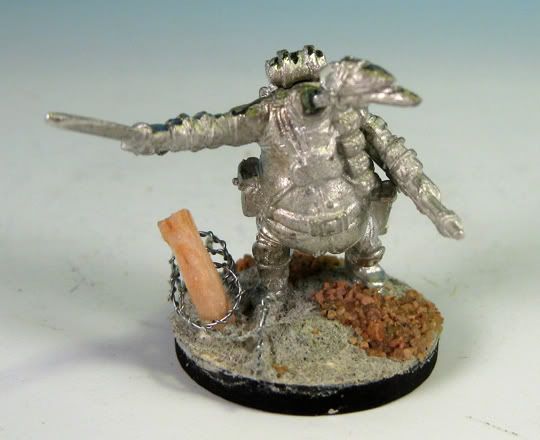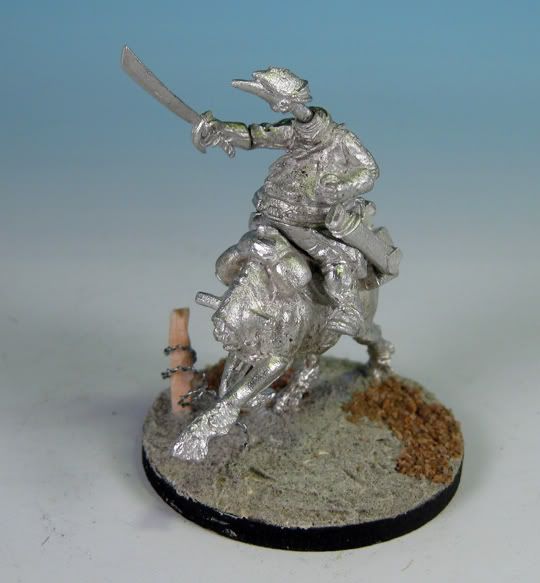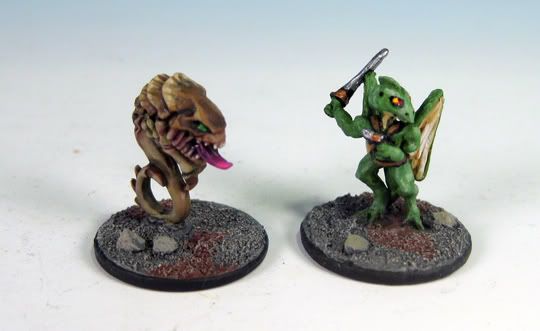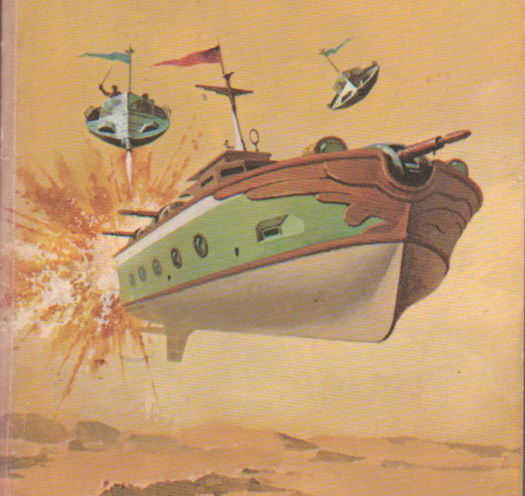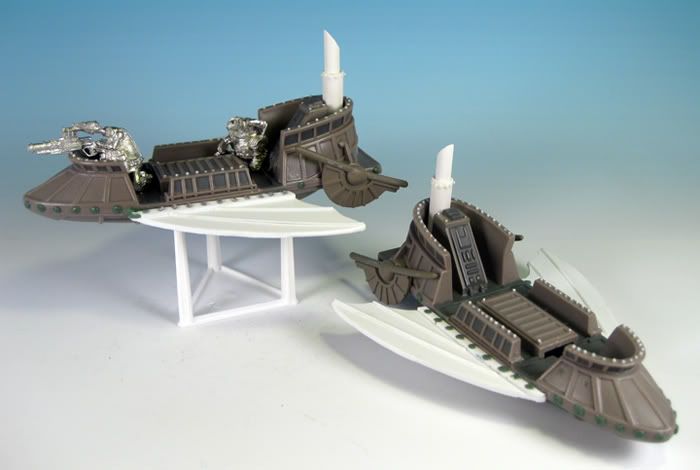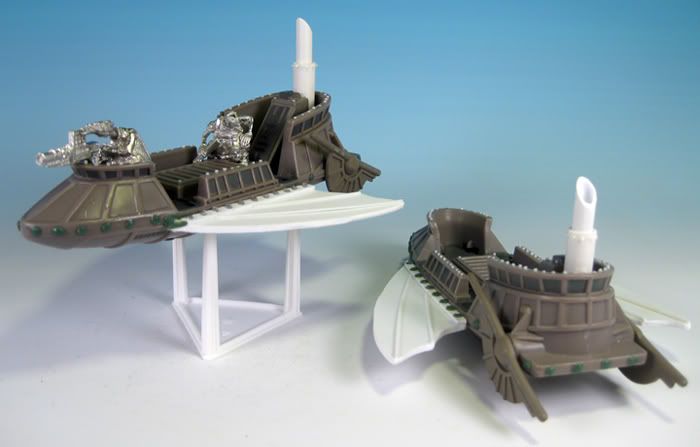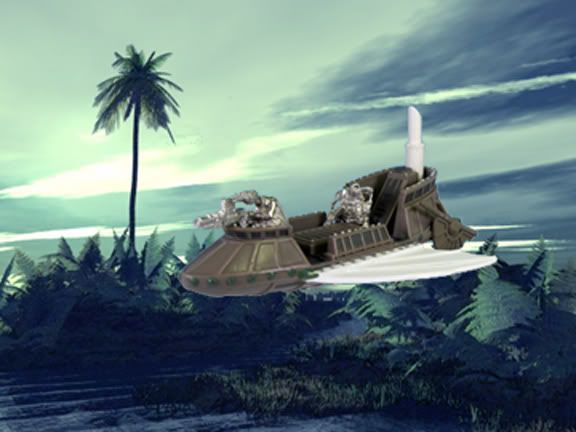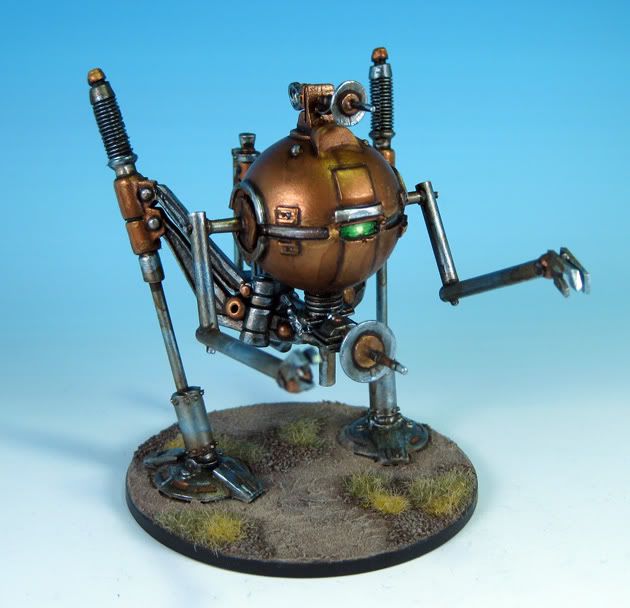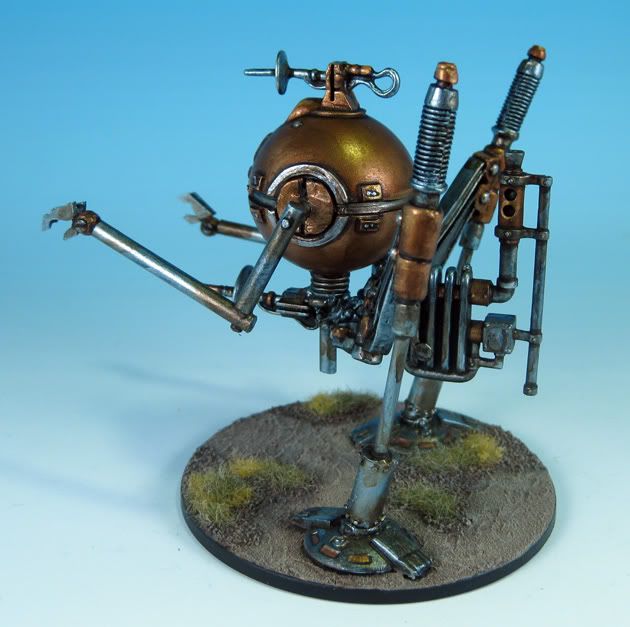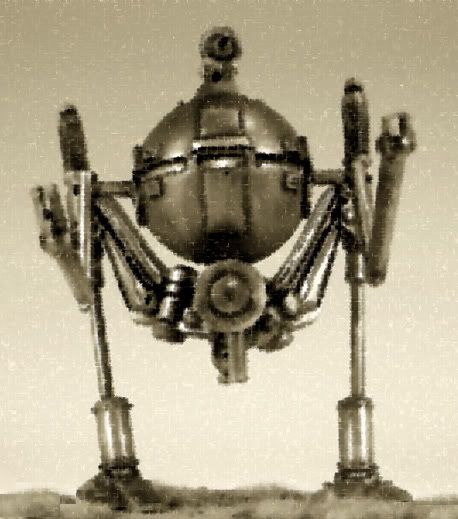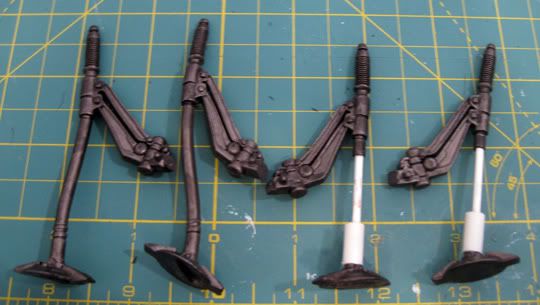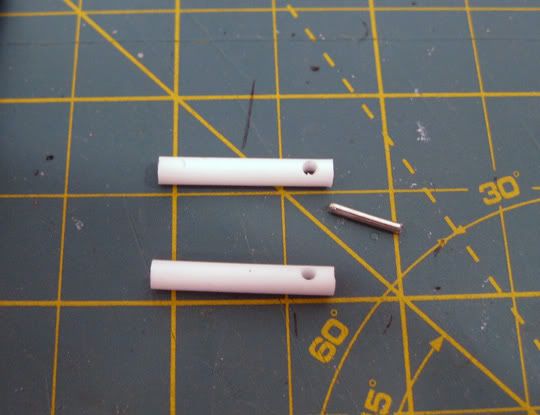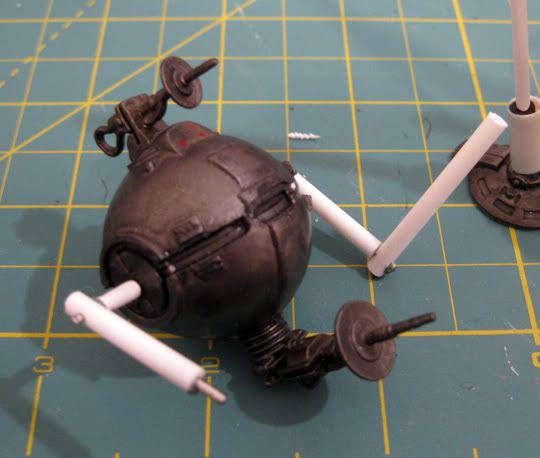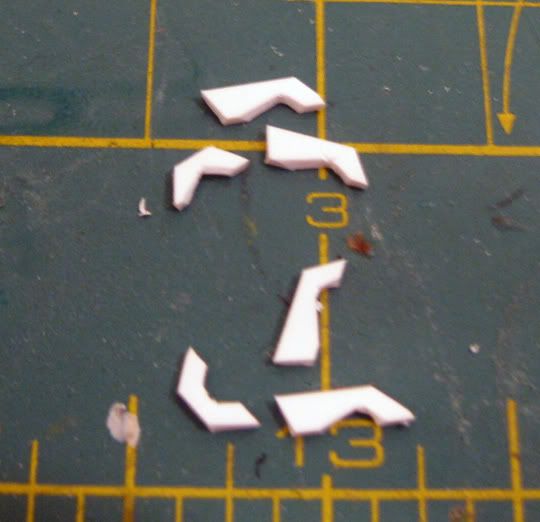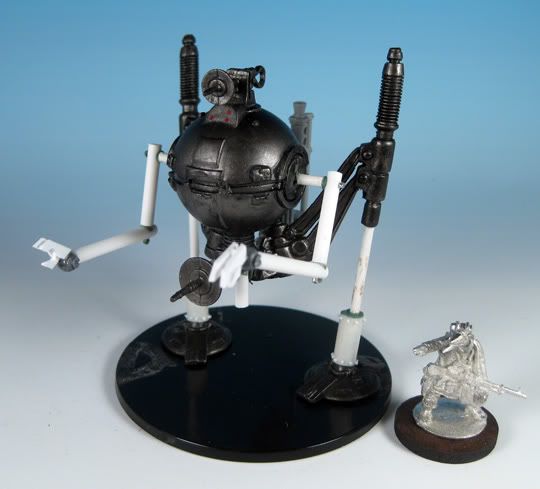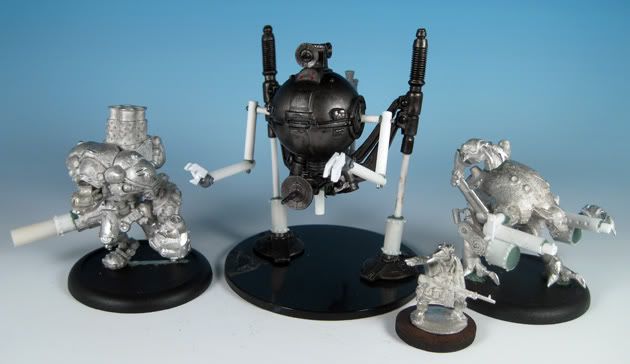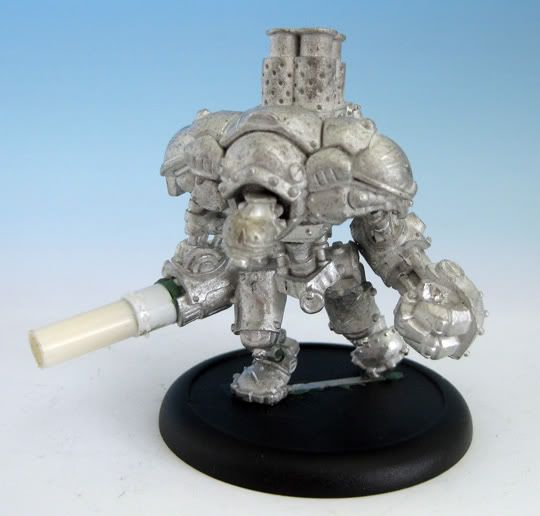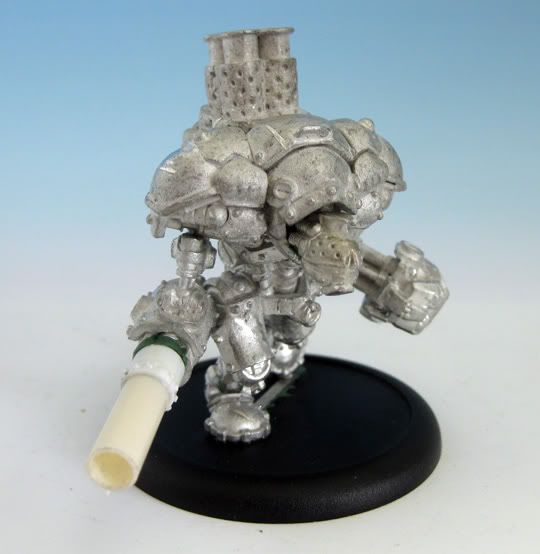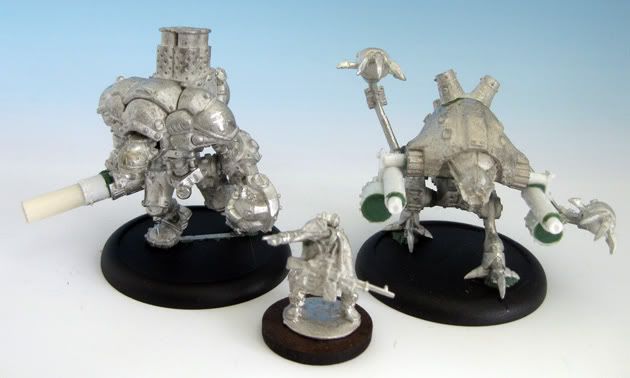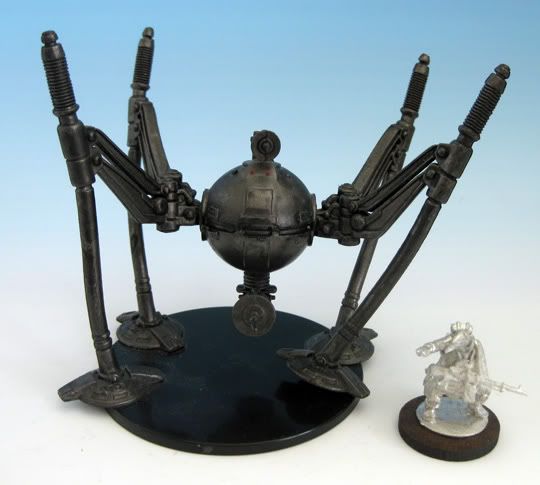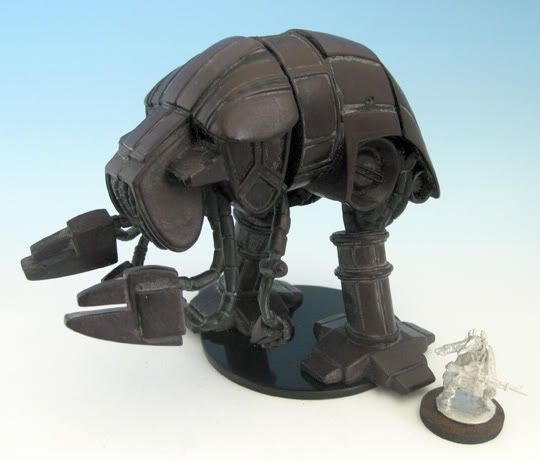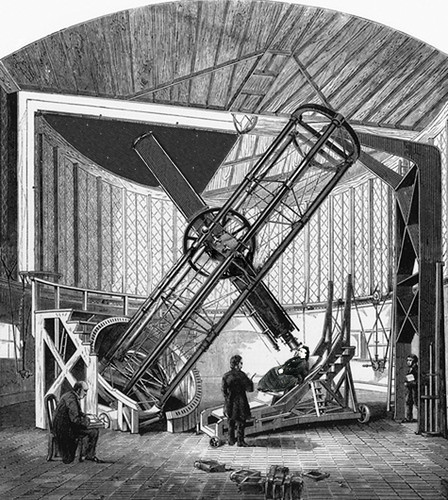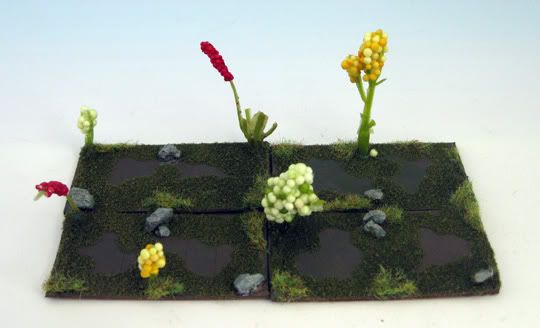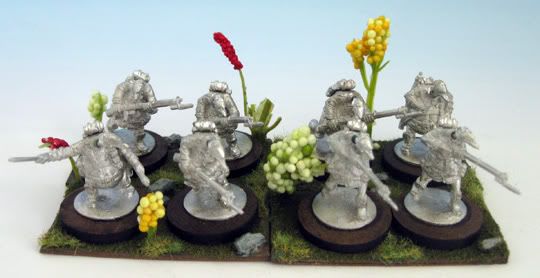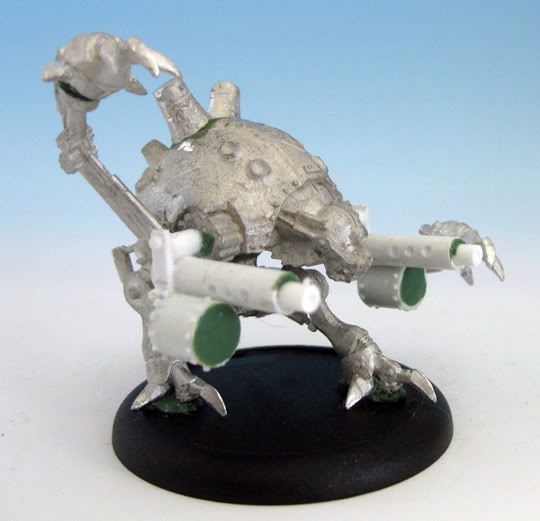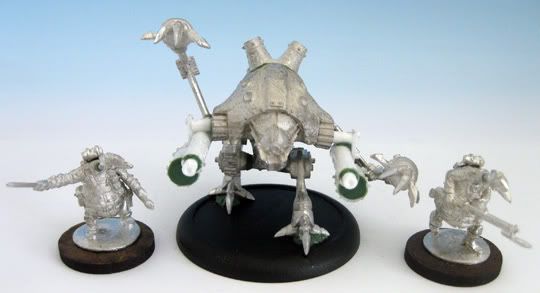I've been in this hobby long enough to remember when the Slotta-Base was new.

I remember thinking 'why would a metal miniature have a plastic base?"
It really was original thinking.
They are so common now it is easy to forget that once nearly all (if not all) miniatures had integrated bases.
The Slotta-Base has a lot of advantage for the Hobbyist:
1. They are uniform in shape & size
2. They create a flat surface once the miniature is glued in place.
3. There is room underneath to add weights or magnets.
The Slotta-Base isn't the only option however.
There are now a host of high quality resin base manufacturers. But I'm not going to talk about those now.
Maybe sometime I will- I've had some good experiences with several, but for now I'm just going to talk about the alternatives to the Slotta-Base that are in the same price range or less than our old friend the Slotta-Base.
First, the 'Rounded edge bases', sometimes called 'display bases'.
I first saw these with Warmachine and was duly impressed. The Cadillac of Slotta-Bases.
They have several nice features:
1. Still has room underneath for weights and magnets.
2. Fancier curved rim looks nice and gives more surface to pick up the model by the base.
3. They have a slight depression for the surface, so your basing material sits 'in' the base, rather than on top of it.
These are now being made with a flush bottom and the entire base being a cavity, so that you can build it up inside, allowing for deep water. This is nice if you want to 'sink' large items in the water, but if you want a water base these are fine just as they are. I've been making swamp bases with these for a long time, the depth it provides is plenty.
Here is a miniature I'm working on for Impact!'s site.. I have got to find the time to get around to finishing them..
Believe it or not, that depth is plenty to make a nice rich swamp.
Next up: MDF or Masonite Bases:
These are high density pressed fiber bases that are available from many hobby supply stores such as Litko & Gale Force 9, as well as many sellers on Ebay.
Gale Force 9 sells them by the pint or quart. Those are empirical measurements for all those outside of the U.S. where we still measure as the middle ages intended...
as Grandpa Simpson said 'My car gets 40 rods to the hogshead and that's the way I likes it!"
To put it in terms the Brits among us can understand, you can get 2 glasses (pints) of beer worth of bases for $15. $15 right now is about 35p. Or soon will be.
Suffice to say: these are cheap.
The main advantages beyond price are:
1. They have more weight to them than plastic slotta-bases.
2. Easy to drill into them to pin miniatures or basing bits.
3. The surface area is greater than the same size slotta-base.
This last point is why I first bought some, and why overall they are my favorite type of base.
The edges are perpendicular to the base, not angled like slotta bases or round-lip bases.
A Slotta base's bevel is about 1mm wide. It doesn't sound like much, but for a 20mm base, that means 10% of the surface area is missing.
A Round-lip base's rim is 2.5mm wide. So a 30mm base has only a 25mm square surface.
Sometimes this surface area is desperately needed, especially when you consider the scale creep that miniatures have been experiencing.
The first project I used these bases for was my Bayou Elves. I wanted more surface area since elves come on 20mm bases- and there just isn't much room on them for doing much scenic work. Having 10% more room sounded good to me.
This mini would have been impossible on a Slotta-Base. The rim of the pond is where the bevel would be, as is his foot and reeds in the back.
The other advantage is units are not having their ground work broken up by V-grooves of black bevels
I'm using the same kind of bases for my Quar:
Quar come with integrated bases that are nearly the size of a slotta-base's surface. These bases gave me more room to work with for scenics as well as some extra room to even out the 'bump' of the integrated base.
Lastly, they smell like a campfire! So nice.
The only real downside is that since they are solid, if you want to use magnets you'll need to drill out a hole for it. Not impossible, but certainly more work than gluing a magnet to a slotta base.
Similar to the masonite bases is Plasticard. This is a nice cheap way to make bases, especially for element-bases, if you don't mind cutting a lot of plastic card, and you're careful about doing it right.
The last type I'll mention, and probably the cheapest bases: washers & coins.
Of these two similar materials, I prefer coins.
Coins, especially the penny, is ideal for 15mm skimish bases.
I'm doing all my 15mm sci-fi with coins whenever possible. Why?
1. The are cheap.
2. They are smaller than slotta-bases.
3. They are thinner than slotta-bases.
This last reason is the most important to me. 15mm minis are smaller than 28mm, of course, and so to my eye, look a bit odd when based on slotta-bases: the bases are just too thick. Add to this that 15mm minis have integrated bases in their casting, and it makes the bases even thicker for a 15mm mini than for a 28mm mini.
Pennies are much thinner and very suitable to 15mm minis.
Here are a couple minis that I based on pennies for 15mm Sci-fi.
One precaution I take however is to 'paint' the edge of the penny with thinned acrylic modeling paste. Paint is easier to scratch and ding off of coins than other metal, but after a coat of modeling paste I haven't had any problems.
Overall, even without going to the more expensive, but admittedly very nice, resin bases, there are several economical choices for basing that give you a bit more for options than the standard Sloot-Base.
Thanks for wading through some Blithering!
I should have a 15mm vehicle review and some more for the Quar as well as some Blood Bowl heading your way soon.
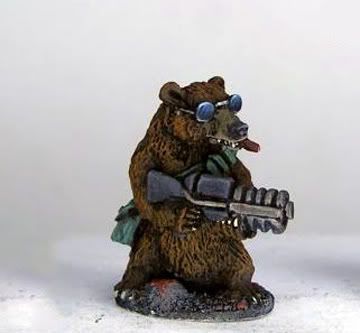

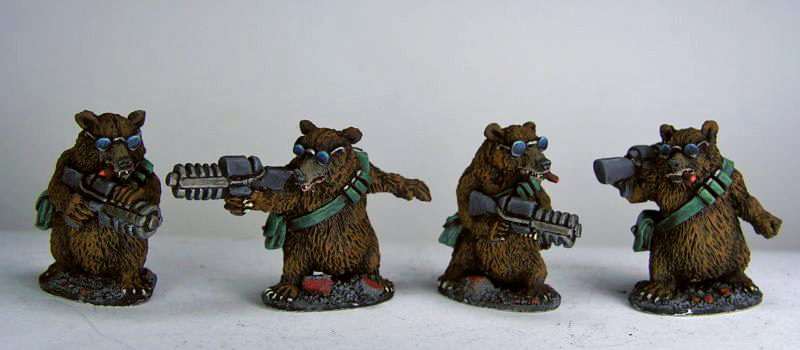







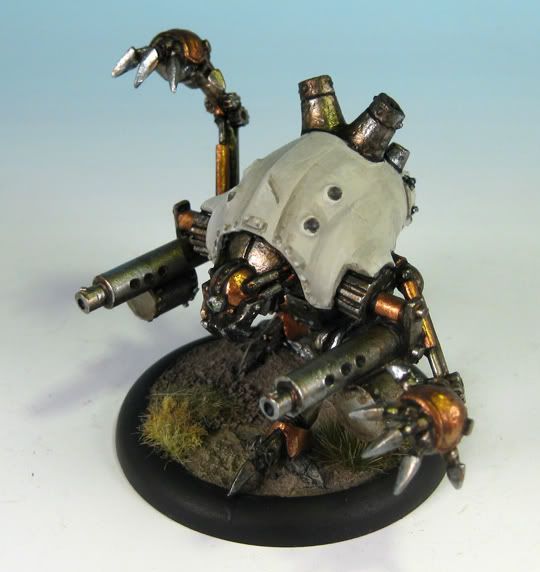

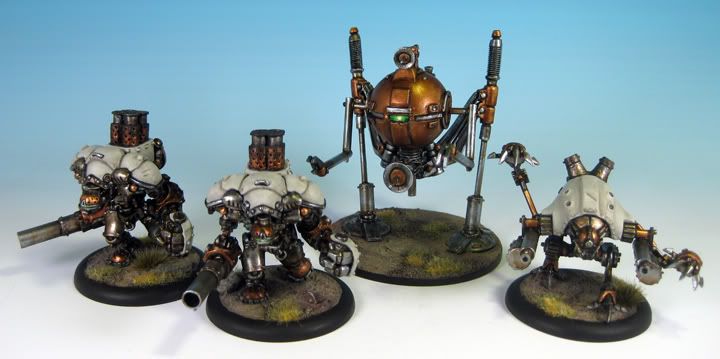
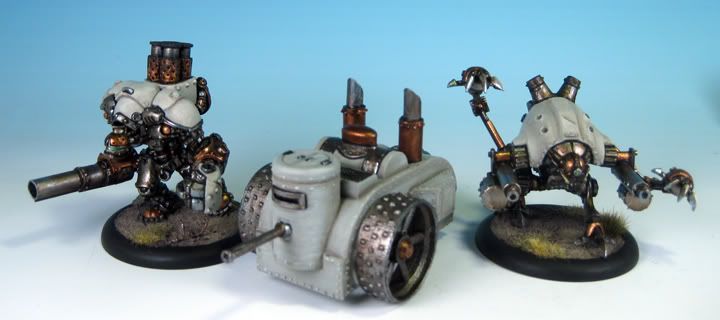
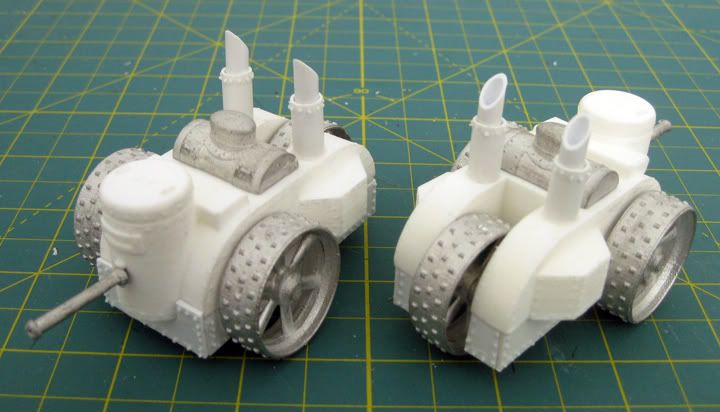

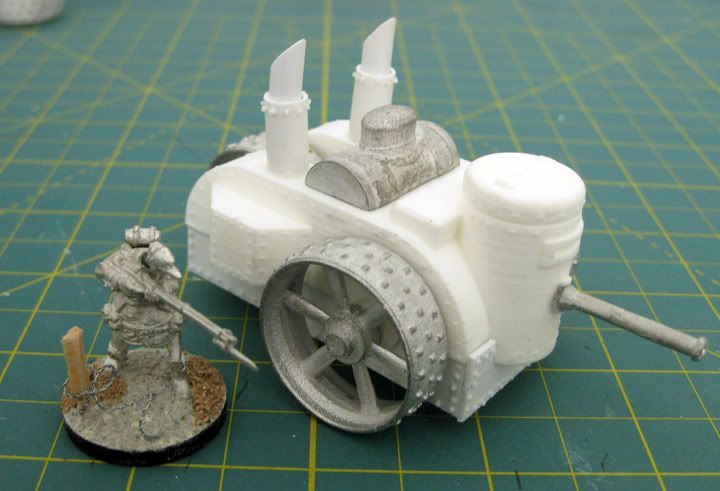
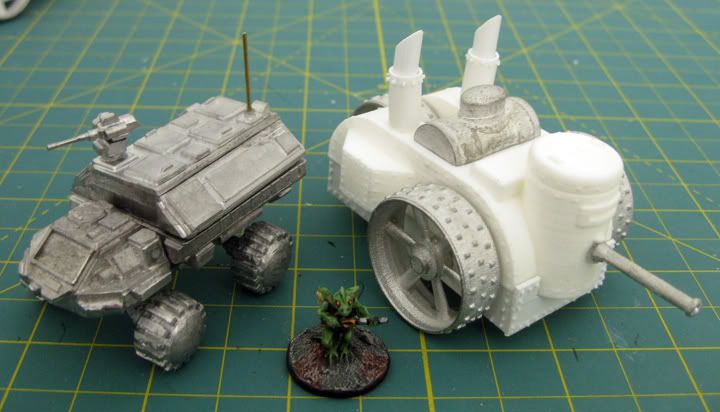
 I remember thinking 'why would a metal miniature have a plastic base?"
I remember thinking 'why would a metal miniature have a plastic base?" 
